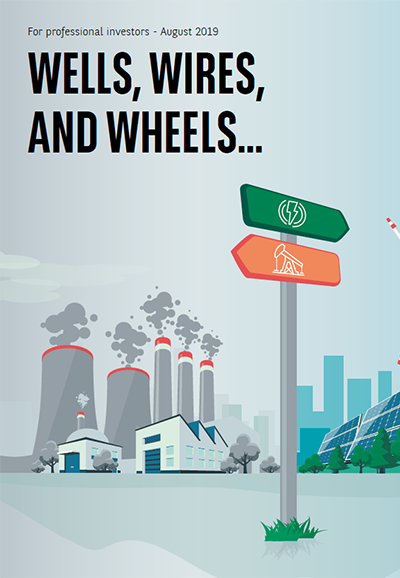The launch of a new funding instrument designed to help “brown” companies shift to greener business activities is always going to generate excitement. The new product causing even more of a stir than normal is the transition bond, with the target brown issuers being those that currently have a high carbon footprint, and therefore excluded from existing markets for sustainable finance.
BNP Paribas’ in-house sustainability experts Trevor Allen and Mark Lewis explain what transition bonds are – and why they could play a pivotal role in bringing climate-driven financial instruments into the mainstream for corporates, institutions and asset managers alike.

What are transition bonds?
Transition bonds are a new asset class targeted at industries with high greenhouse gas (GHG) emissions – the so-called “brown industries” – that will allow them to raise capital with the goal of becoming less brown. Their objective is to help the issuer shift to greener business activities.
These bonds differ from green bonds, which are designed for “green industries” alone – that is, industries already on the road to reducing GHG emissions, such as renewable energies.
Brown industries, however, are not green today, cannot be entirely green tomorrow – yet they can, with the right incentives, take active steps to become more sustainable. Such sectors include:
- Mining – especially of minerals critical for the low-carbon economy, such as lithium and cobalt
- Heavy industry (e.g. cement, aluminium, iron, steel, chemicals)
- Utilities (e.g. electricity, gas, water, cable, telecoms)
- Transport & mobility
Each of these activities plays a vital role in modern economies. However, societal and governmental pressure will necessarily force such companies to shift to less-brown business activities where possible as part of the global effort to keep the increase in the global average temperature to within 2°C above pre-industrial levels, or even 1.5°C (as agreed under the 2015 Paris Accord).
Why is it urgent to finance transition?
We are currently on track to reach an increase of between 2.9°C and 3.4°C – well above the targeted level.
Given its broader potential investment base, the transition market could outgrow the green bond market by the mid-2020s.
Efforts to transition to low-carbon economies must be ramped up rapidly. In its latest Emissions Gap Report – an annual gauge of the gap between where we are and where we need to be – the UN Environment Programme (UNEP) calls the period from 2009 to 2019 a “lost decade” of climate action.
Despite the warnings, pledges, and climate policies, GHG emissions continued to increase, driven by economic and population growth. In order to align with the Paris Agreement target of 2°C, nations now have to reduce GHG emissions by 7.6% each year between 2020 and 2030 – that is, to triple their target ambitions compared to current policies.
Banks will play a crucial role, necessitating a parallel approach:
- Accelerate the development and implementation of “green” businesses with green finance, such as green loans, green bonds and sustainability-linked loans
- Reduce the negative impact of “brown” businesses with transition bonds, with the following aims: reduce GHG emissions, foster inclusive growth, and tackle other biodiversity challenges (such as deforestation, land degradation, desertification, plastic pollution, overfishing and extinction).
Read more: Why scalability and effectiveness matter for the Green Transition?
How is the transition bond market evolving?
Investors increasingly believe that ramping up transition bonds will have a greater impact on mitigating climate change than issuing green bonds alone – although they are complementary and we will need a combination of both.
There have been three transition bonds issued to date – from an oil company, a utility and a beef producer. The asset class is yet to be firmly established. It does, however, show great promise – and has huge potential.
Investors know there is demand for a market-based solution to sustainable finance. Sustainable bond market volumes grew 25% between 2017 and 2018, driven by European corporate and sovereign green bonds – and we forecast it will grow by slightly more this year, topping $240 billion.
As environmental, social and governance (ESG) shifts from being a gauge of corporate social responsibility to a significant driver of investment strategy, we think transition issuance can play a major role. Indeed, given its broader potential investment base, we think the transition market could outgrow the green bond market by the mid-2020s.
Read more: Where the just transition starts – and where it stops

By Trevor Allen

By Mark Lewis